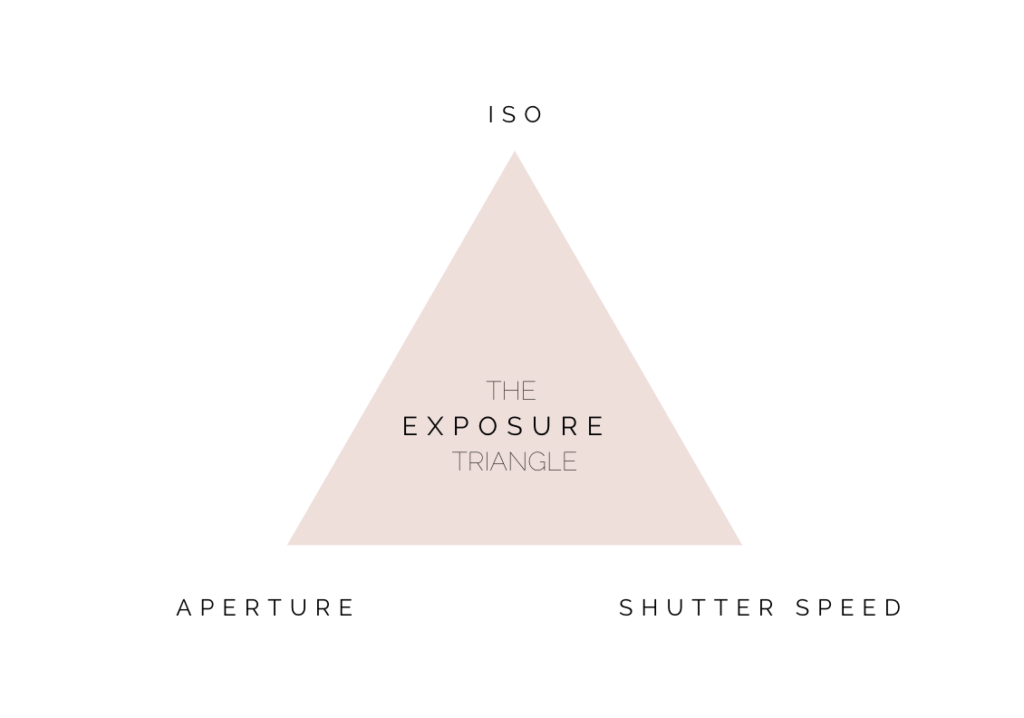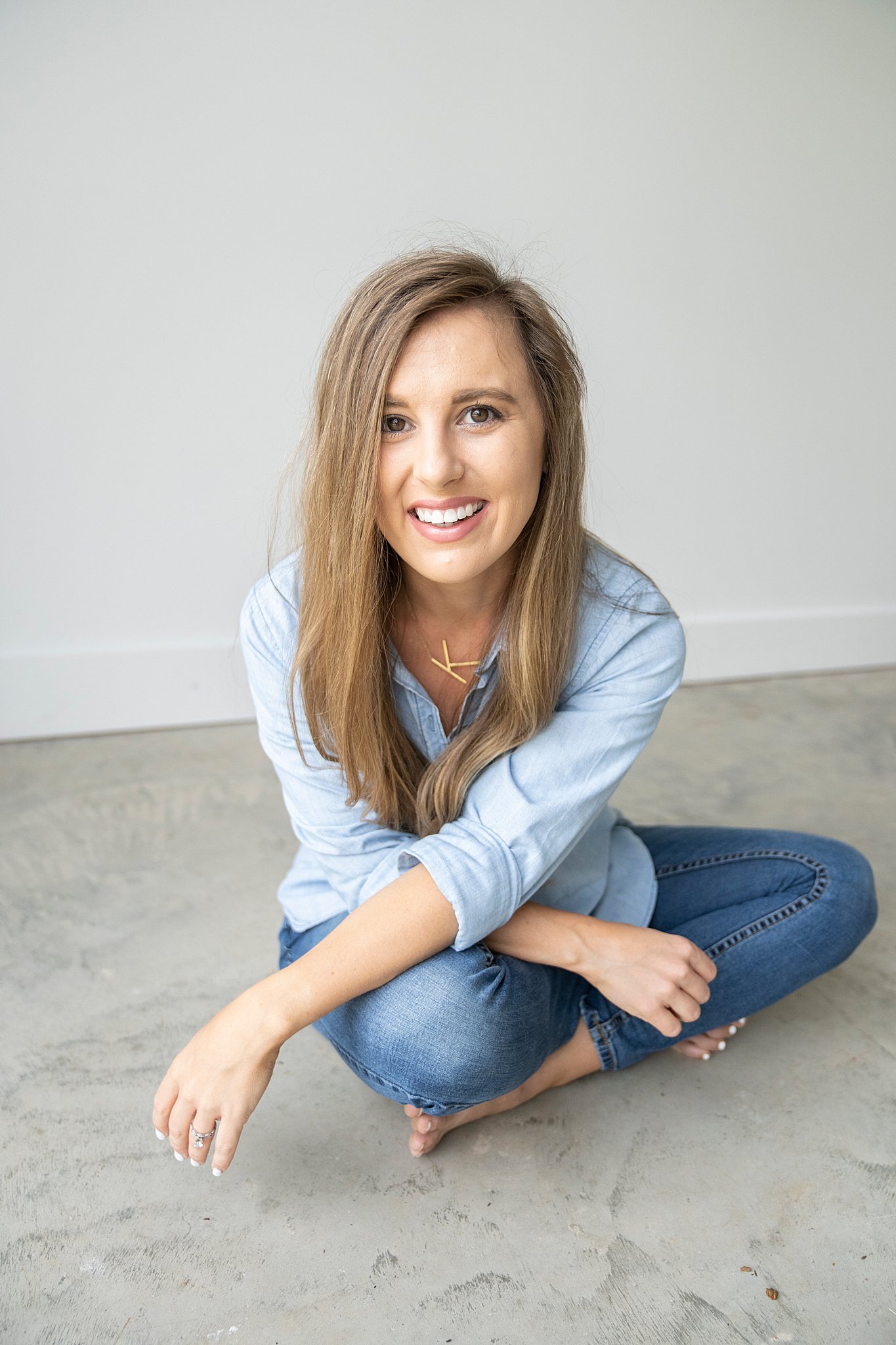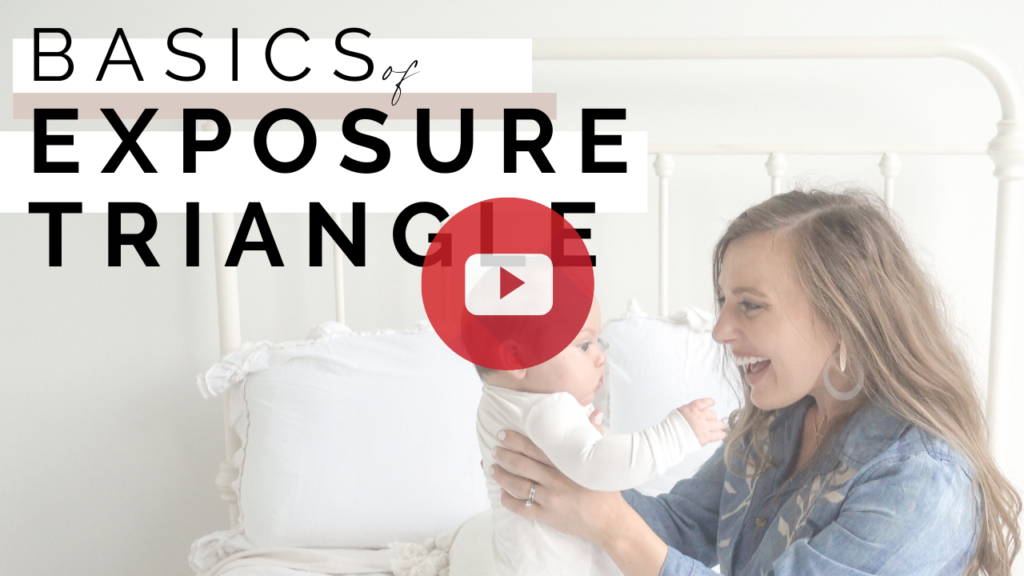Have you ever wondered exactly what the exposure triangle is and how it works? Are you ready to start shooting in full manual mode? Well, my friend, you’ve come to the right place. In today’s post, Exposure Triangle Explained WITHOUT Confusion, I’m going to break it down.
Full disclosure: learning to use a camera isn’t hard. Teaching it is hard. However, I’ve cracked the code and have taught countless students to use a camera in full manual mode. For you to REALLY understand the exposure triangle, you must understand each component (ISO, Shutter Speed, and Aperture) fully. I have free tutorials on each you might want to check out first to avoid confusion. If you want a more throughout and in-depth explanation, check out my signature course, Mastering Manual Mode. Click here to read more about MMM.
More of a visual learner? Watch my YouTube video here:
What is the exposure triangle?
The exposure triangle is made up of 3 components: shutter speed, ISO, and aperture.  These 3 things work together to give the image an exposure (how bright the image is.)
These 3 things work together to give the image an exposure (how bright the image is.)
I like to think of these 3 things as ingredients to a recipe. You will want different “amounts” of each item based on the lighting you’re photographing in. For example, the settings (shutter speed, ISO, and aperture) would look very different if you were taking a photo during the day than at night. They work together to get the perfect exposure in almost any lighting situation. This is why we can capture images on a bright sunny day when there is fresh snow on the ground (super bright) and we can take photos when there is very little light.
The Components of the Exposure Triangle
All three components can change how bright an image is. However, each has its own job.
Shutter Speed freezes motion when dialed-in correctly
Aperture gives the image a gorgeous blurry background (or not.) This is referred to as depth of fiend.
ISO mainly affects how bright the image is but will also make the image grainy or noisy at a high ISO.
Ready to get photographing but don’t want to forget anything?
Click here to download my FREE manual mode cheat sheet! The perfect guide to print out and take with you while shooting.
So there you have it, Exposure Triangle Explained WITHOUT Confusion. To fully understand the exposure triangle, you need to understand shutter speed, aperture and ISO. Interested in FINALLY learning to use your camera? Check out my signature course, Mastering Manual Mode. Click here to read all about how much moms all over the country have gotten amazing results with MMM.
ADD LINKS TO OTHER POSTS
UPDATE MMM LINK (WHEN DONE IN PODIA)



VIEW THE COMMENTS
add a comment